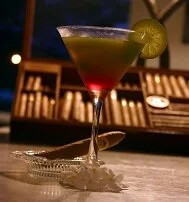Staple Foods
Beans: red and black beans are common; served at nearly every meal alone or mixed with coconut rice
Plantains: a very common side dish or ingredient, but not as common as rice, beans, or tortillas
Rice: cooked in coconut milk, rice can be served alone or can be mixed with beans and served together
Tortillas: flat bread often made from corn and served with most meals
Regional Variations, Specialties, & Unique Dishes
Bollos: corn dough wrapped in corn husks or plantain leaves then boiled; sometimes it is stuffed with beef
Empanadas: dough stuffed with meats, vegetables, and sometimes cheese; can also be a dessert when stuffed with fruits
Dining Etiquette
Dining in Panama is more a bit different from much of Central America as restaurants tend to be a bit more upscale and dining can be more formal. However, socialization and the company joining you at a meal remain the most important aspects of any meal in Panama. As you arrive for a meal in Panama, being a little late is generally accepted and common; however for business meals, especially with businesspersons used to working with Americans, be on time. For purely social gathers, arriving 15 minutes late is common and many locals will be even later.
Once everyone arrives, drinks are often served prior to dinner. This generally begins with a toast of "salud" then followed by drinking and conversation. Drinking is fairly informal and intended to put everyone at ease. Once the food is prepared or your table is ready you'll be shown a seat so let your host seat you. If you are accompanied by your significant other, you may be seated separately; this encourages greater socialization.
With the arrival of the food, the host will invite everyone to begin eating with the words "buen provecho." Although the Panamanians are fairly forgiving of foreign dining habits that differ from their own, they do expect you to keep your hands in sight by resting your wrists on the table and, if possible, you should eat in the continental style (fork in the left hand and knife in the right). With some foods, you may be expected to eat with your hands, generally when tortillas are involved. If this is the case, follow the lead of the locals.
If dining in a local's home take small amounts of food at first so you can ask for a second helping; this is a great compliment to your host. As you finish eating, whether in a home or a restaurant, clean all the food from your plate then place the knife and fork together on the right side of the plate to indicate that you have finished.
If dining at a restaurant, summon the server by making eye contact (don't wave or call his/her name). The inviter is expected to pay for everyone present; if you are the guest be sure to offer to pay, an offer that will likely be turned down. If you are paying, look to see if a service change is included in the bill; if so, no additional tip is needed. If there is no service charge, tip up to 10% in rural areas and up to 15% in the cities if at a nice restaurant. At more informal restaurants, tips are rarely expected, although rounding up is an appreciated gesture.
Celebrations & Events
Similar to many places, the Panamanians like to serve their most favored and expensive foods to celebrate various events. For the people though this varies between fresh seafood and beef as the preferred main course. These dishes are common at birthdays, anniversaries, weddings, and other celebratory events.
Two particular festivals are Fat Tuesday (Mardis Gras or Carnaval) and Christmas, both celebrations tied to Christianity. Christmas is generally a family affair that serves chicken tamales, arroz con pollo (rice with chicken), and fruits. A dining event that locals and foreigners alike can easily attend is Mardis Gras, which takes place the Tuesday before Ash Wednesday (this date varies year to year). The foods served on this day are never healthy, generally fattening and meat-oriented, and usually consumed with vast amounts of alcohol.
Drinks

Drink
Nearly all of the world's most commonly consumed beverages are available in Panama, from soft drinks and coffee to tea and juices. The locals like their local juices though and the selection is quite varied as juice options include pineapple, orange, papaya, passion fruit, and many more. Often times these juices are sweetened and condensed milk or water is added. There are numerous spin-offs of these juices, including fresh coconut milk and the corn-based chicheme, both of which are common street-side drinks. The other most popular drink is coffee, which is generally grown locally or in neighboring countries; no matter where it's from, the quality is generally quite high.
When it comes to grabbing an alcoholic drink, beer is the preferred choice of the locals and many are brewed domestically, including "Atlas," "Balboa," "Panama," and "Soberana." If you are seeking a liquor, any type is available, but for a local twist try seco, which is distilled from sugarcane and often served with milk over ice. Wines are growing in popularity and are widely available, but none are local.
The tap water is generally not safe to drink in Panama, but in limited areas it might be safe. The most cautious course of action is to entirely avoid the tap water and items that could be made from or with the water, such as ice, fruits, and salads. If you do decide to drink the local tap water first check with your local hotel or guesthouse to learn the cleanliness of the water in that area. If the water is safe, remember that many people may have trouble adjusting to the local tap water as it will most certainly be different from what your system is used to if you are not from the region.